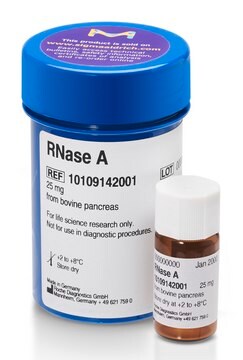Key Documents
680303
Tetrahydrofuran solution
contains 20 % (v/v) 1,2-Propanediol
Synonim(y):
Butylene oxide, Oxolane, THF, Tetramethylene oxide
About This Item
Polecane produkty
Postać
liquid
Poziom jakości
zawiera
20 % (v/v) 1,2-Propanediol
zanieczyszczenia
≤0.20% water
0.02 meq/g Titr. acid
0.02 meq/g Titr. base
kolor
APHA: 1
gęstość
0.914 g/mL at 25 °C
ciąg SMILES
C1CCOC1
InChI
1S/C4H8O/c1-2-4-5-3-1/h1-4H2
Klucz InChI
WYURNTSHIVDZCO-UHFFFAOYSA-N
Powiązane kategorie
Opis ogólny
Zastosowanie
- Self-Assembly of Polyoxometalate-Based Nanoparticle Surfactants in Solutions: Highlights the use of Tetrahydrofuran as a critical solvent in the synthesis and self-assembly of polyoxometalate-based nanoparticles, exploring applications that could impact multiple fields including polymer research, drug delivery systems, and nanostructured materials (Xia et al., 2024).
- Highly sensitive fluorescence turn-OFF and reversible chemical sensor for Hg(2+) ion based on pyrene appended 2-thiohydantoin: Tetrahydrofuran is used as a key solvent in the development of a novel fluorescence-based chemical sensor for mercury detection, demonstrating its application in environmental monitoring and safety in laboratory settings (Gawas et al., 2024).
- Effect of Plasma pretreatment and Graphene oxide ratios on the transport properties of PVA/PVP membranes for fuel cells: This research employs Tetrahydrofuran as a processing solvent in the creation of polyvinyl alcohol/polyvinylpyrrolidone membranes enhanced with graphene oxide, focusing on improvements in ion transport for fuel cell applications (Abdel-Hamed et al., 2024).
- Optimized Incorporation of Furan into Diketopyrrolopyrrole-Based Conjugated Polymers for Organic Field-Effect Transistors: Utilizes Tetrahydrofuran as a solvent to aid in the synthesis of novel conjugated polymers, potentially leading to advancements in organic electronics and polymer research (Neu et al., 2024).
Hasło ostrzegawcze
Danger
Zwroty wskazujące rodzaj zagrożenia
Zwroty wskazujące środki ostrożności
Klasyfikacja zagrożeń
Carc. 2 - Eye Irrit. 2 - Flam. Liq. 2 - STOT SE 3
Organy docelowe
Respiratory system
Zagrożenia dodatkowe
Kod klasy składowania
3 - Flammable liquids
Klasa zagrożenia wodnego (WGK)
WGK 3
Temperatura zapłonu (°F)
-6.2 °F - (THF)
Temperatura zapłonu (°C)
-21.2 °C - (THF)
Środki ochrony indywidualnej
Eyeshields, Faceshields, Gloves, type ABEK (EN14387) respirator filter
Wybierz jedną z najnowszych wersji:
Masz już ten produkt?
Dokumenty związane z niedawno zakupionymi produktami zostały zamieszczone w Bibliotece dokumentów.
Nasz zespół naukowców ma doświadczenie we wszystkich obszarach badań, w tym w naukach przyrodniczych, materiałoznawstwie, syntezie chemicznej, chromatografii, analityce i wielu innych dziedzinach.
Skontaktuj się z zespołem ds. pomocy technicznej







